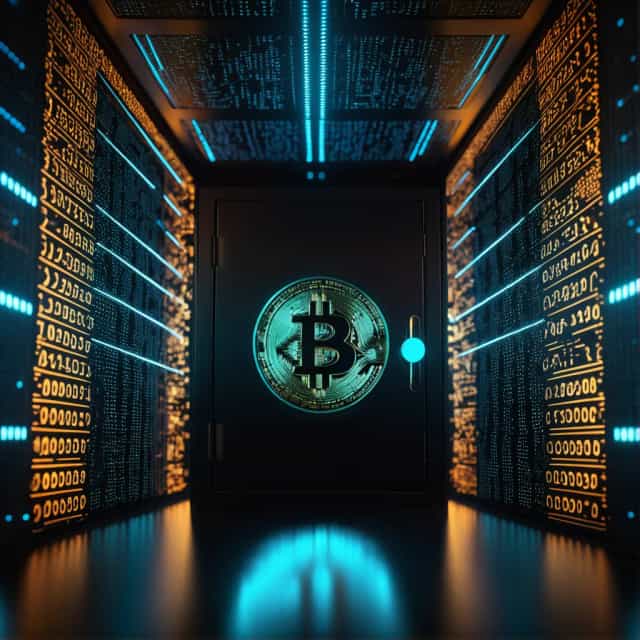
Image source: Block Media
Do Circuit Breakers Work in Digital Asset Markets? Experts Say No
In traditional financial markets, circuit breakers serve as a safety mechanism to temporarily halt trading during significant market downturns, reducing panic and systemic risks. However, applying these mechanisms to the fast-evolving digital asset market, particularly in decentralized finance (DeFi), has proven to be ineffective, according to recent expert analyses. The unique properties of digital markets present several fundamental challenges that render circuit breakers obsolete and potentially detrimental.
The Digital Asset Market’s Largest Liquidation Event
On October 18, the cryptocurrency industry witnessed an unprecedented $19 billion liquidation event—the largest in its history. This event underscored the volatility inherent in digital asset markets. Industry insiders speculate that the application of circuit breakers in such instances would not have mitigated the turmoil. Quite the opposite, many believe these mechanisms might have exacerbated instability during the sell-off, due to their incompatibility with the decentralized nature of the industry.
While circuit breakers can temporarily pause trading in traditional settings, their effectiveness hinges on centralized control—an element notably absent in the decentralized systems powering digital asset exchanges. Analysts argue that the core principle of decentralization eliminates centralized points of intervention, making such preventative measures not only impractical but also counterproductive.
Why Circuit Breakers Fail in Decentralized Finance (DeFi)
Circuit breakers have been a trusted safeguard on centralized exchanges for decades, but specialists note their structural incompatibility with DeFi platforms. Centralized exchanges are governed by single entities, enabling them to halt trading swiftly when needed. DeFi protocols, on the other hand, run on blockchain technology and function as autonomous systems operating 24/7 without centralized oversight.
The decentralized architecture of these systems ensures that no single party has an "off button" to pause trading across the board. Gregory Xethalis, a legal counsel at Multicoin Capital, emphasized that attempts to implement circuit breakers in decentralized markets could distort prices across interconnected platforms. “Introducing circuit breakers to DeFi could cause price distortions between markets,” Xethalis explained. Moreover, halting trades could lead to liquidity mismatches, contributing to greater price volatility rather than controlling it.
In DeFi, liquidity is distributed across multiple pools operating autonomously, so restricting access could disrupt the balance between buying and selling activities. Without a uniform method to enforce halts in trading, circuit breakers could inadvertently deepen liquidity crises and market instability.
Signs of Resilience in DeFi Protocols
Despite the catastrophic $19 billion liquidation event, major DeFi protocols demonstrated remarkable stability, operating without disruption throughout the crisis. Platforms like Uniswap (UNI), Aave (AAVE), and dYdX maintained their functionality, showcasing the technical robustness of decentralized networks even during periods of extreme market stress.
Analysts highlighted this resilience as a testament to the strength of decentralized systems. Unlike centralized exchanges that depend on human intervention and predetermined safeguards, DeFi protocols thrive on autonomous, self-governing models that adapt in real-time. "This incident underscores the robust architecture of decentralized networks," experts concluded, asserting that such adaptability is foundational to DeFi’s long-term success.
Rethinking Risk Management for Digital Markets
While circuit breakers remain a reliable tool for curbing systemic risks in centralized financial systems, their inefficacy in decentralized markets highlights the urgent need for tailored solutions. The challenges faced during the liquidation event have intensified calls for developers and policymakers to prioritize innovative risk management systems that align with the principles of decentralization.
Rather than retrofitting old financial solutions, the focus should be on enhancing market stability through mechanisms designed specifically for decentralized ecosystems. Forward-looking approaches must consider key aspects of blockchain technology, including its global reach, 24/7 operation, and self-executing smart contracts.
Paving the Future of Digital Asset Governance
As the debate over regulation in the digital asset space continues, it’s clear that preserving the integrity of decentralized markets while creating stability-enhancing tools will play a pivotal role in shaping the industry’s future. Whether leveraging decentralized insurance protocols, algorithmic risk mitigation strategies, or enhanced investor education, the next wave of innovation must address the unique demands of the crypto landscape.
In the absence of circuit breakers, decentralized systems have already demonstrated a capacity to weather major crises through resilience and adaptability. By developing solutions rooted in the strengths of these systems, industry players can foster greater trust and participation among investors while ensuring long-term stability in the evolving digital economy.










